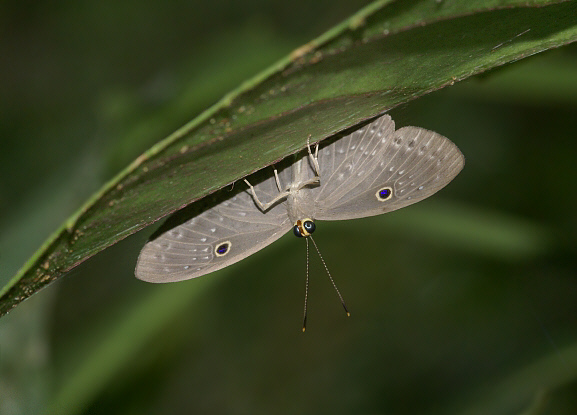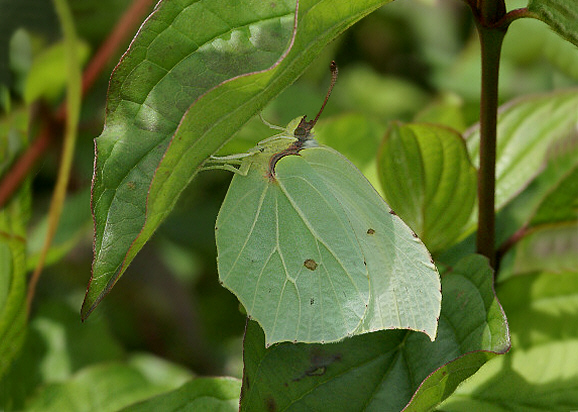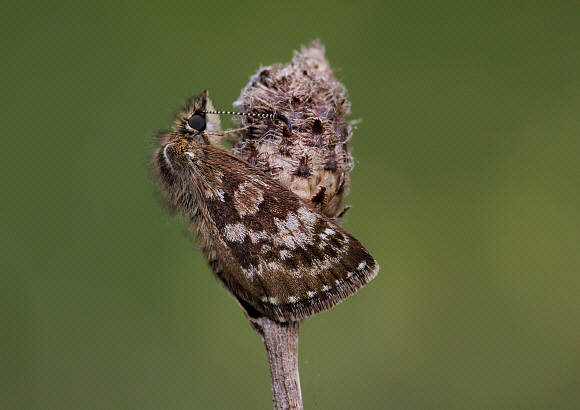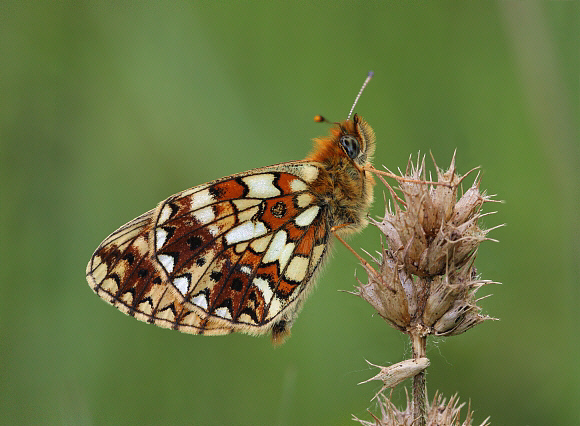In cool or rainy weather butterflies are inactive, and thus particularly vulnerable to attack by birds and small mammals. In tropical areas many species hide away under leaves even when it’s sunny, and only come out into the open to undertake specific tasks such as feeding or reproducing. This behaviour is particularly widespread amongst the Riodinidae and Pyrginae.

Eurybia molochina ( Riodinidae ) hiding beneath a leaf in the Peruvian rainforest – Adrian Hoskins
Many butterflies, both in the tropics and in temperate regions hide under leaves in overcast or rainy weather and roost beneath them at night. They are often patterned and coloured in such a way as to minimise detection by avian or mammalian predators at these times.
The Brimstone Gonepteryx rhamni for example is wonderfully camouflaged as it hangs beneath leaves of dogwood, buckthorn, bramble or ivy. Its wings are very leaf-like in shape and colour, and even have raised venation to simulate the veins of real leaves.

Brimstone Gonepteryx rhamni at roost beneath a dogwood, Hampshire, England – Adrian Hoskins
Pyrgines such as the Grizzled Skipper Pyrgus malvae usually roost at the top of dead flower-heads. The Dingy Skipper Erynnis tages behaves similarly, but takes things a stage further by wrapping it’s wings tightly around dead knapweed flowers, where it is almost impossible to see ( unless you are a very determined entomologist ! ).

Erynnis tages roosting on a dead knapweed flower, Hampshire, England – Adrian Hoskins
Polyommatine Blues usually roost at the top of grass heads, assuming a head-downwards posture. Satyrines such as Small Heath, Marbled White and Meadow Brown commonly roost on grass heads or flower heads. Checkerspots and Pearl-bordered Fritillaries adopt a similar tactic, often roosting on the flowers of rushes. Such strategies may seem a little difficult to understand, as the butterflies are easily spotted. The probable explanation is that they are choosing sites where they are out of reach of nocturnal predators such as mice.

Clossiana selene, ( Nymphalinae : Melitaeini ) seed-head, Wiltshire, England – Adrian Hoskins
